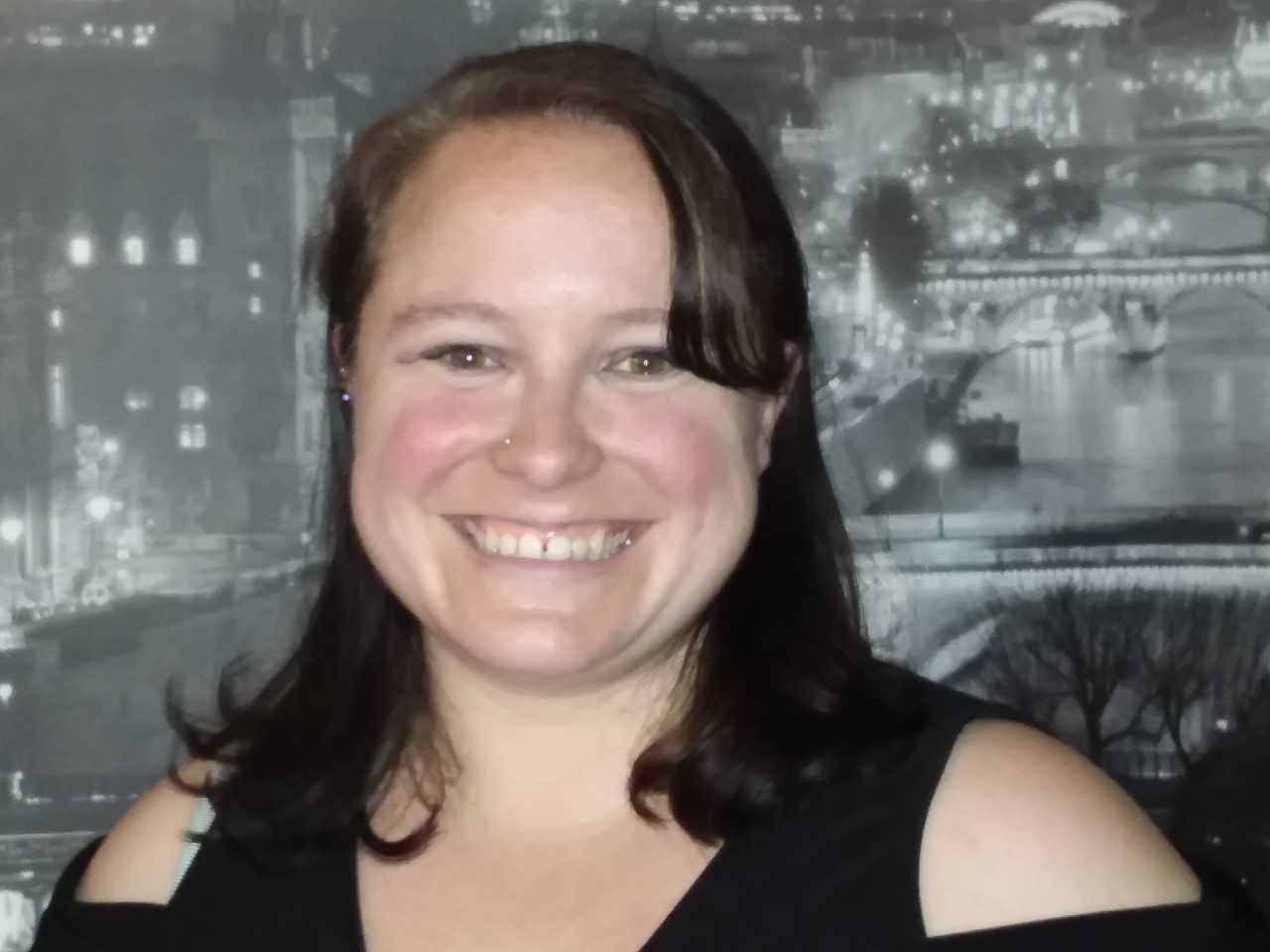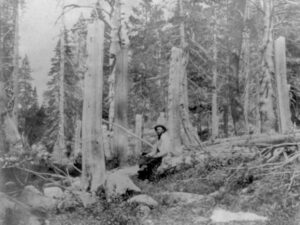Growing up in a suburb outside San Francisco, my family vacationed in Lake Tahoe every summer. I remember driving by Donner Lake and driving over Donner Pass. I believe I was about eight years old when my mom gave me the book Patty Reed’s Doll, which I still have today. The book details the experience of the Donner Party getting snowbound at Donner Lake. I became fascinated by the story. It wasn’t long before I was reading everything I could get my hands on about them, another fact that continues today. When I was thirteen, I was driving by the lake with my father, my brother, and his girlfriend at the time, and the subject came up. For the first time, I saw the statue, known today as the Pioneer Monument, that my brother told me was the same height as the snow during the winter of 1846, when the Donner Party became stranded there.
With snow flurrying around it, and snow on the ground that only came up to maybe half of the statue’s pedestal, I was flabbergasted by this thought. Further research taught me that the statue is 22 feet high. To this day, that is mind blowing to me. I can’t imagine ever being in that much snow. Instantly, the tragedy of the Donner Party made sense to me. With that much snow, of course they got stuck. Of course, they ran out of food and supplies. Of course, half of them died. And, not to dismiss the facts, of course they resorted to cannibalism.
When we began to study the Oregon Trail and the California emigrants in school, I was excited to study the Donner Party. I was looking forward to learning something that I didn’t know and I was hoping to have the opportunity to impart some of my knowledge to my classmates. But to my shock and dismay, they were never mentioned.
As somebody with more than a passive interest in genealogy, I’ve researched Donner Party descendants in the past and found that few are vocal about their ancestry.
I recently finished Daniel James Brown’s book The Indifferent Stars Above. As I mentioned before, the tragedy still fascinates me, and books about the Donner Party fill my bookshelves. Brown’s book was different in the sense that it covered more about the aftermath of the tragedy. As somebody with more than a passive interest in genealogy, I’ve researched Donner Party descendants in the past and found that few are vocal about their ancestry. Whether this is out of respect for their suffering and trauma, or if they choose not to talk about it because their ancestors likely didn’t, I don’t know.
What I do know is that Donner Party survivors were influential in the area. The Reed family was active in San Jose, and many streets there are named for members of their family. The Graves family was well known in the Napa area, and Mary Ann Graves Clarke was fondly remembered as a schoolteacher there years later. Some of the Donner children, all of whom were orphaned during the ordeal, settled in Sacramento, and today an elementary school is named for Elitha Donner. The last surviving Donner Party survivor was Isabella Breen, who is buried in the same cemetery as several members of my family, not far from my grandparents.
The ordeal also inspired a museum, memorial park, several historical sites and markers, and even a hike. The experience is, arguably, surrounding thousands of California residents, whether or not they know it. So my question is, for an experience that many have gone out of their way to memorialize, why is it still being swept under the rug in our schools?
Share this:

About Maureen Carey
A native of San Francisco, Maureen Carey has a B.A. in European History from Regis University and a M.A. in American History from the University of Colorado. She is passionate about genealogy and has enjoyed tracing her own ancestry to colonial America. Her many research interests include America, Ireland, and Italy. In her free time, Maureen loves to read, travel, and spend time with her family, friends, and pets.View all posts by Maureen Carey →
